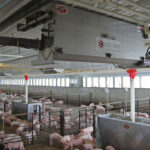Crop Tour 2016: Indiana Edition
By Darren Goebel Greetings once again from Crop Tour 2016. During the last week of July, I travelled to the Kevin Trimble farm in Amboy, Indiana, about an hour north of Indianapolis. While most of the Midwest has been getting...
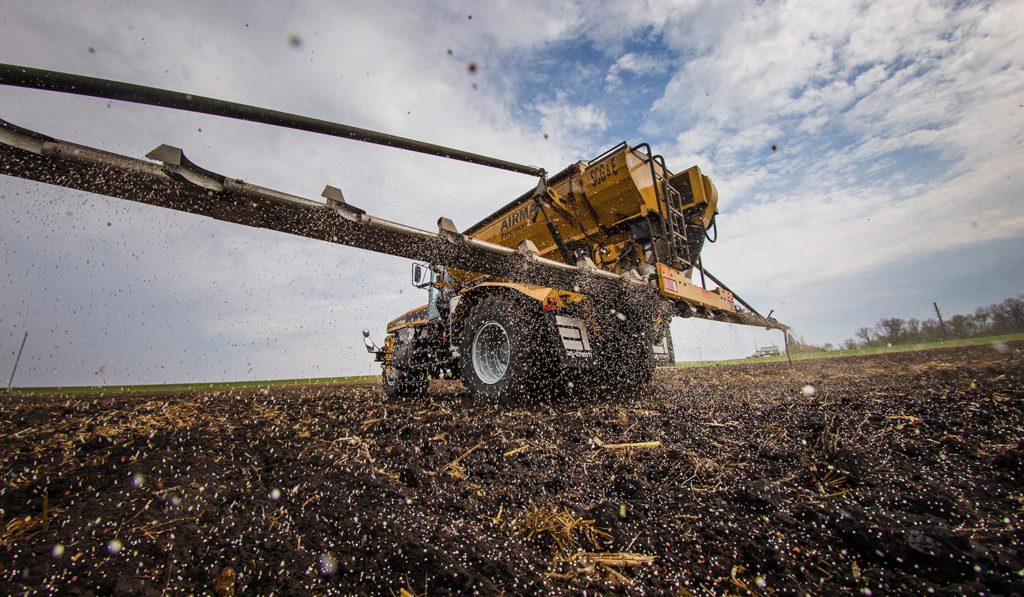
Crop Tour 2016: Indiana Edition
By Darren Goebel Greetings once again from Crop Tour 2016. During the last week of July, I travelled to the Kevin Trimble farm in Amboy, Indiana, about an hour north of Indianapolis. While most of the Midwest has been getting...By Darren Goebel
Greetings once again from Crop Tour 2016. During the last week of July, I travelled to the Kevin Trimble farm in Amboy, Indiana, about an hour north of Indianapolis. While most of the Midwest has been getting plenty of rain, this pocket in north central, Indiana is super dry. In fact, Kevin told me that his farm has not received any appreciable amount of rain since the latter part of June.

As a result of the dry weather, the crop is showing signs of stress, highlighting some key differences in our plots.
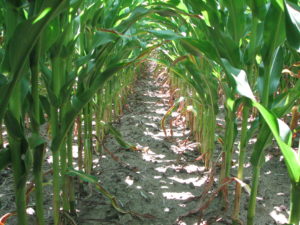
This is the split between automatic hydraulic downforce (DeltaForce) on the left and 400# downforce on the right. Notice that the corn on the right is showing more drought stress; lower leaves are brown and desiccated with overall lighter plant color. This is a result of heavy in furrow packing that created compaction in the root zone. While you would not normally see this in a whole field, differences show up very clearly in the plot. In a three-year study, growers that used DeltaForce averaged 11 bushels per acre higher yield. I suspect the yield difference will be much higher in this field, but we will have to wait until fall to know for sure.
Compaction problems quickly show up when moisture is limiting.
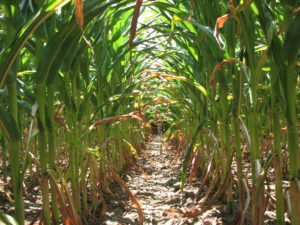
Kevin drove his backhoe along the end to demonstrate how automatic hydraulic down force can adjust to differences in soil bulk density. Above: The crop is suffering in the compaction zone. Below: Planting Map showing compaction zone.
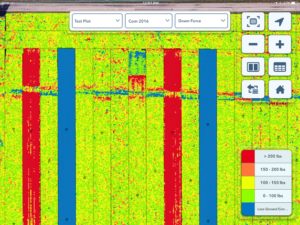
This report shows that compaction from backhoe path prior to planting caused Deltaforce to react at planting.
The depth of planting study is showing some interesting results. Many growers plant corn shallow because they believe there is less risk in stand establishment. Unfortunately, shallow planting can cause as many problems as it solves. Most agronomists recommend a minimum of 1.5” planting depth with 2” preferred. Of course, soil type and moisture level should be taken into account. One great thing about White planters is that depth control can be calibrated to ensure consistent planting depth across the entire width of the planter. In this case, the planter planted the corn consistently at 1” deep. Unfortunately, there wasn’t uniform enough moisture at 1” to get all of the seed up consistently.
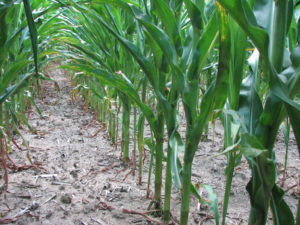
This is the split between 1” planting depth on the right and 1.5” planting depth on the left. The 1” planting depth is exhibiting runt plants as a result of delayed emergence due to dry soils at that depth after planting. These runt plants will not produce an ear. The 1.5” and deeper planting depths do not have any issues with runt plants. Stand establishment is similar at all planting depths (1.5, 2.0, 2.5, and 3.0) except 3.5” depth. The 3.5” planting depth is suffering about a 10% reduction in stand. We will take these plots to yield and share results in an upcoming report.
Stand uniformity in corn has been getting a lot of attention since the late 90s. Most farmers and agronomists know there are heavy yield penalties for skips and doubles making planter performance absolutely critical. Making things even more challenging, seed companies can’t always guarantee requested seed sizes for that hot new hybrid; and refuge in the bag is a whole other story since seed from different lots must be blended in the same bag. The 9800VE series incorporates meters that can accurately singulate and row units that can accurately plant any corn seed size.
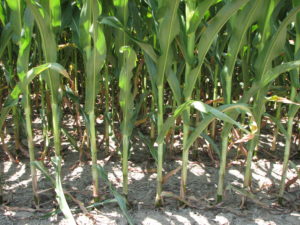
Above: Near picket fence stand. Below: Doubles and Skips from a poorly adjusted planter.
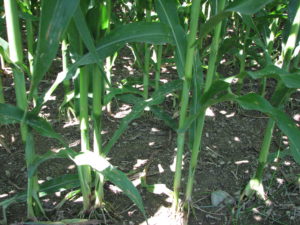
During the last two weeks of August, a team of Agronomists and Product Specialists will be travelling throughout the Midwest speaking at Crop Tour 2016 plot locations. RSVP to attend a Crop Tour event near you: http://agcocropcare.com/crop-tour-rsvp/!


